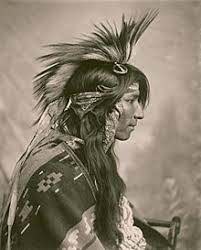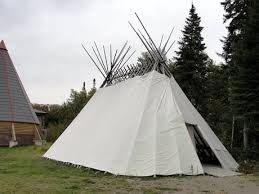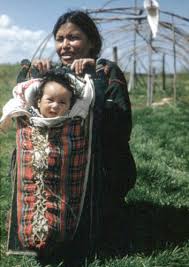 The Taykwataga Mountain actually refers to an area of land in Northeastern Ontario that is home to the Taykwa Tagamou Nation or Cree nation. The community that thrives there have lived on the land and used the resources for thousands of years. As of the 1990s, it was estimated that there were approximately 90,000 people that could trace their ancestry back to the Cree Nations. Even today there are still people there that practice the traditions that belonged to their ancestors. However, there are also people who focus on forestry, mining, and other more “modern” tasks.
The Taykwataga Mountain actually refers to an area of land in Northeastern Ontario that is home to the Taykwa Tagamou Nation or Cree nation. The community that thrives there have lived on the land and used the resources for thousands of years. As of the 1990s, it was estimated that there were approximately 90,000 people that could trace their ancestry back to the Cree Nations. Even today there are still people there that practice the traditions that belonged to their ancestors. However, there are also people who focus on forestry, mining, and other more “modern” tasks.
A Walk Through History
 The Taykwa Tagamou Nation is actually one of seven First Nations in the Hudson Bay/James Bay areas of Canada. These other nations include the Attawapiskat First Nation, the Kashechewan First Nation, Chapleau Cree First Nation, Fort Albany First Nation, Moose Cree First Nation, and the Missanabie Cree First Nation. All nations are represented by the Mushkegowuk Council, which began in the late 1970s. The goal of the council is to ensure that the First Nations work together to assure that everyone in the community have their needs met.
The Taykwa Tagamou Nation is actually one of seven First Nations in the Hudson Bay/James Bay areas of Canada. These other nations include the Attawapiskat First Nation, the Kashechewan First Nation, Chapleau Cree First Nation, Fort Albany First Nation, Moose Cree First Nation, and the Missanabie Cree First Nation. All nations are represented by the Mushkegowuk Council, which began in the late 1970s. The goal of the council is to ensure that the First Nations work together to assure that everyone in the community have their needs met.
This was not always the case.
Prior to Europeans arriving, the Cree lived in small bands throughout Canada. They lived a simple life that required them to hunt, gather nuts, and search for fruit. After the Europeans arrived, the Cree began trading furs for goods such as horses and clothing.
This wasn’t all bad at first. The Cree could still thrive. However, as time passed, bison herds were lost, and some Cree had to move to reservations where they could take up farming. The Plains Cree were hit hardest by this.
How the Cree Lived
 Home Life: The Woodland Cree lived at in lodges that were made from wooden poles and covered by sod, bark, or animal hides. The Plains Cree, lived in teepees that were made with wooden poles and buffalo hides.
Home Life: The Woodland Cree lived at in lodges that were made from wooden poles and covered by sod, bark, or animal hides. The Plains Cree, lived in teepees that were made with wooden poles and buffalo hides.
Language: Algonquian, which is still one of the most spoken languages in Canada.
Clothing: Before the Europeans came, clothing in the Cree Nation was made of animal hides. Women wore long dresses and men would wear shirts, leggings, or breechcloths.
Traditions: Cree Nations were often taking part in various cultural ceremonies and traditions. They would do Sun Dances/Thirst Dances. They had powwows, vision quests, pipe ceremonies, feasts, sweat lodges, and more. There was a time when their rituals were banned though in 1951 those restrictions were lifted, and people can now enjoy them freely again. One tradition that Cree still follow is the “Walking Out Ceremony”. For this, a child cannot touch the ground outside until after the ceremony, so it takes place for each child when they begin to walk. It is said that this ceremony welcomes them into the community.
Religious Beliefs: The overall Idea of the Cree is that people and nature interconnect. Health and happiness can only be achieved by living a life that is in balance with nature. Animals and other types of spirits can and do show themselves through dreams. They also believe that during hardships, you should share what you have, especially food, with others.